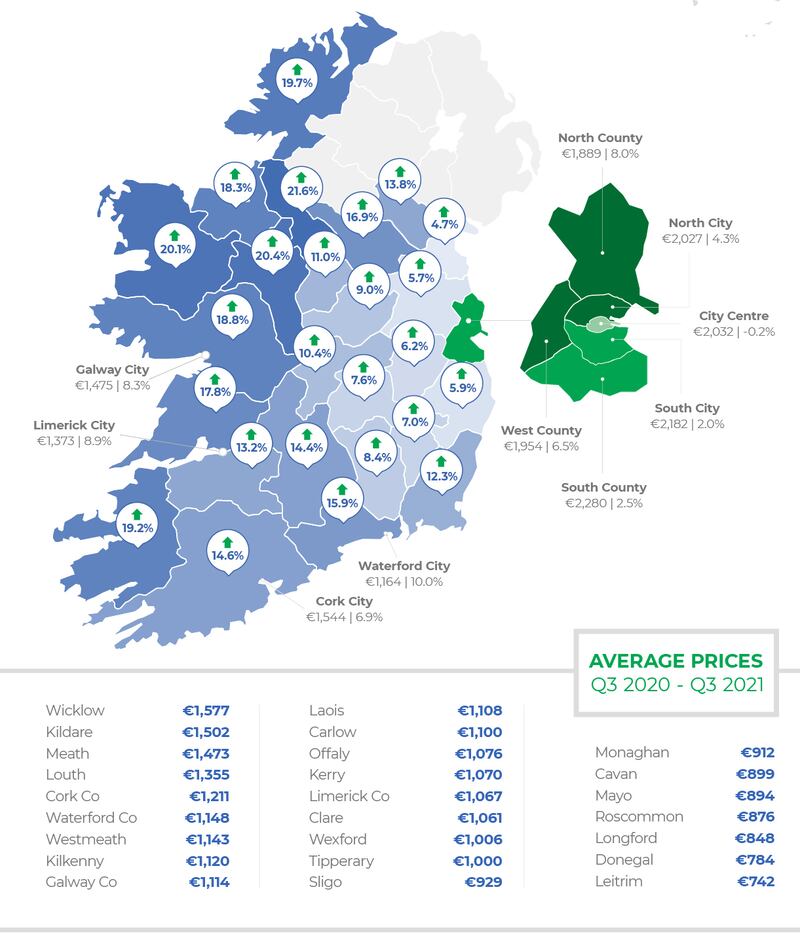Rents are now rising at an annual rate of 6.8 per cent, according to property website Daft.ie.
The company’s latest quarterly report, which tracks monthly asking prices or market rents, linked the increase to an “unprecedented” shortage of rental property in the Irish market.
It said there were just 1,460 homes to rent on its website as of November 1st last, the lowest number since its quarterly series began in 2006. This included just 820 in Dublin.
In Dublin and in the other cities, the stock of homes to rent is between 70 per cent and 80 per cent lower than a year ago, it said.
The report comes as the Government moves to cap rent increases – those related to existing tenancies – at 2 per cent or to inflation if it is lower, the latest in a series of measures aimed at controlling the cost of housing.
According to Daft, the average monthly asking price for rent nationally stood at €1,516 in the third quarter of 2021, more than double the €742 seen in late 2011, in Dublin the average was €2,082.
While rents rose across the State between June and September, there were significant differences in annual inflation rates.
Rents in Dublin were 2.7 per cent higher than a year ago, while rents in Cork and Galway were 6.9 per cent and 8.3 per cent higher.
Inflation in Limerick and Waterford cities was higher again, at 8.9 per cent and 10 per cent respectively, while rents outside the cities are 11.9 per cent higher than a year ago.

Regional differences
Monthly asking prices also varied considerably depending on the region.
In Cork city, the average was €1,544 compared with Galway city (€1,475), Limerick city (€1,373), Waterford city (€1,164) and the rest of the country (€1,152).
The report noted that rents outside Dublin have risen by significantly more than rents in the capital since the pandemic began, representing “a dulling of the Dublin premium”.
But Dublin is still 80 per cent more expensive than non-city rents, a higher premium than in 2006 or 2007, it said.
"Some will react to these trends with an understandable, if misplaced, search for easy solutions. A favourite is rent controls," Ronan Lyons, economist at Trinity College Dublin and author of the Daft report, said.
“But what this report covers is not the average rent paid by sitting tenants – who benefit from rent controls – but the average rent paid by new tenants, who invariably are not covered by such controls,” he said.
“ While I can see the appeal of solving prices by simply making it illegal for prices to rise, it does nothing to address the reason why prices are rising – the lack of rental accommodation,” Mr Lyons said.
Covid-19 temporarily reshuffled Ireland’s rental problems, he said, but the latest figures confirm those problems of shortages are getting worse over time.
“While Dublin had initially seen an increase in rental availability, with the number of rental homes on the market doubling from 1,600 to nearly 3,200 in 2020, those trends have reversed rapidly, with just over 800 homes available to rent on November 1st,” he said.










